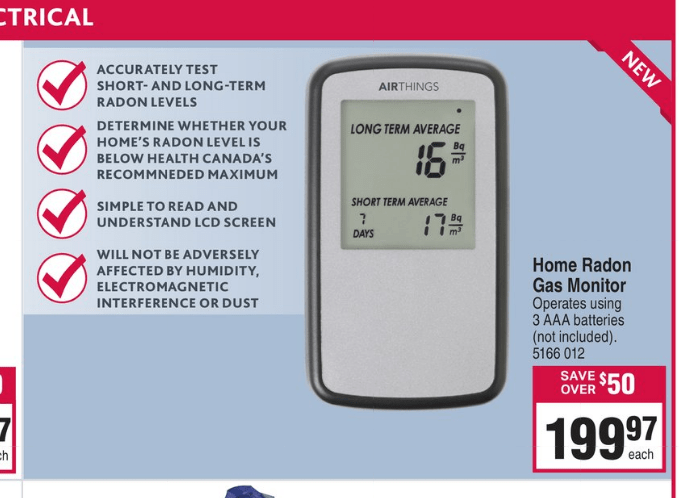U of C researchers sound alarm over radon levels in Calgary homes by James Wood, November 14, 2017, Calgary Herald
After discovering a significant health threat in many Calgary homes, University of Calgary researchers are turning their attention to the rest of the province as they urge Albertans to test their homes for radon gas.
The “Evict Radon” campaign launched Tuesday calls on provincial residents to have their homes tested for the carcinogen, both to improve safety and bolster data collection.
Aaron Goodarzi and his team at the Cumming School of Medicine released a study earlier this year that found one in eight Calgary homes tested exceeded Health Canada’s acceptable radon levels, with the situation 30 per cent more likely to occur in homes built in the last 25 years.
Now the research is being expanded to the rest of the province.
“The geology of Alberta is such that the majority of where everybody is living has a huge radon potential, meaning the naturally-occurring minerals in the ground are generating radon throughout the whole province,” Goodarzi, assistant professor in the departments of biochemistry & molecular biology and oncology, said in an interview Tuesday.
“What will be interesting to determine is whether, much like Calgary, other parts of the province also demonstrate the fact that newer homes have higher radon.”
Radon is a odourless, colourless and tasteless element produced by the radioactive decay of underground uranium minerals which can be drawn up and concentrated inside buildings. It is the second highest cause of lung cancer and exposure causes the death of about 3,200 Canadians a year, according to Lung Cancer Canada.
The Evict Radon campaign — which is open to residents across the province, including Calgary — sees Albertans purchase a radon testing kit through the U of C at a cost of $60. Participants take part in a survey to provide information about their homes and the results of the test are shared with the researchers.
Along with the “gold standard” 90-day test, 1,000 participants in the program will be given a five-day test to try in order to look at the efficacy of short-term testing as a guideline for stakeholders.
[90 day tests won’t tell much. Radon in buildings is highly variable and changes seasonally, and increases with frac’ing (not likely to stop in Alberta any time soon, with Notley govt pimping it as clean and safe in their fraudulent climate non-action plan) and likely also with frac or other oilfield injection induced earthquakes.
Permanent radon detector/monitors are more expensive, but once purchased are owned permanently and can track daily levels and weekly and long term averages for years. This provides much more valuable information, especially while frac’ing unleashes more radon into your home. On sale this week, at Coop Home]
Remediation of a home with high radon levels usually costs around $2,000 and $2,500 and consists of installing a pipe through the basement floor with a fan attached to draw the radon out.
Building code changes in 2015 required new homes to have a rough-in pipe to make it easy to install a radon reduction system if needed.
Goodarzi said improved date from the new study could point to the need for further policy changes, such as government subsidies for radon reduction similar to energy efficiency grants or mandatory testing for facilities where children gather.
Goodarzi said the campaign is also particularly emphasizing the need for testing if homes have young children, who are most vulnerable to the impact of radon.
The Alberta Real Estate Foundation is providing $150,000 for the Evict Radon campaign. [Emphasis added]
[Refer also to:
2013 03 09: Radon gas leaks in coalbed methane fields in Australia spark call for probe
2012 11 01: Silent killer: Health Canada urges testing homes for cancer-causing radon

